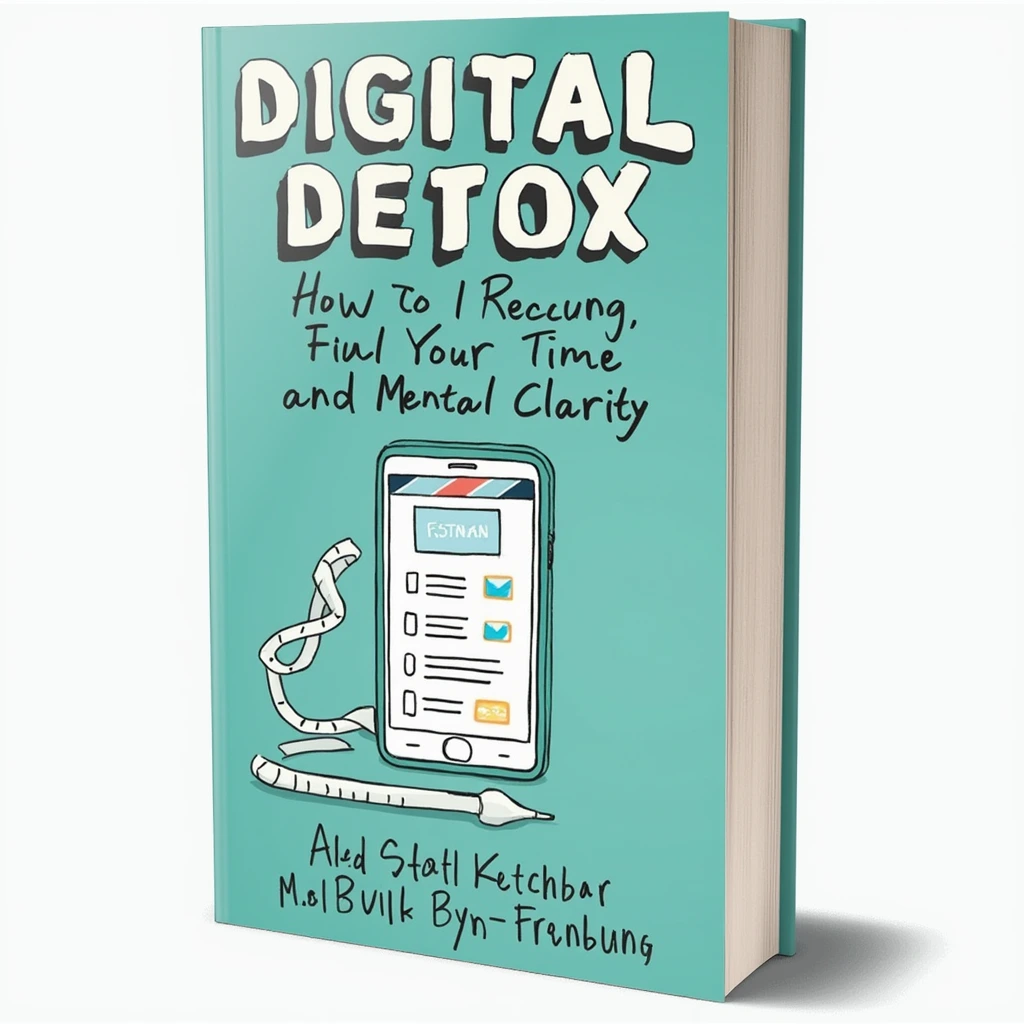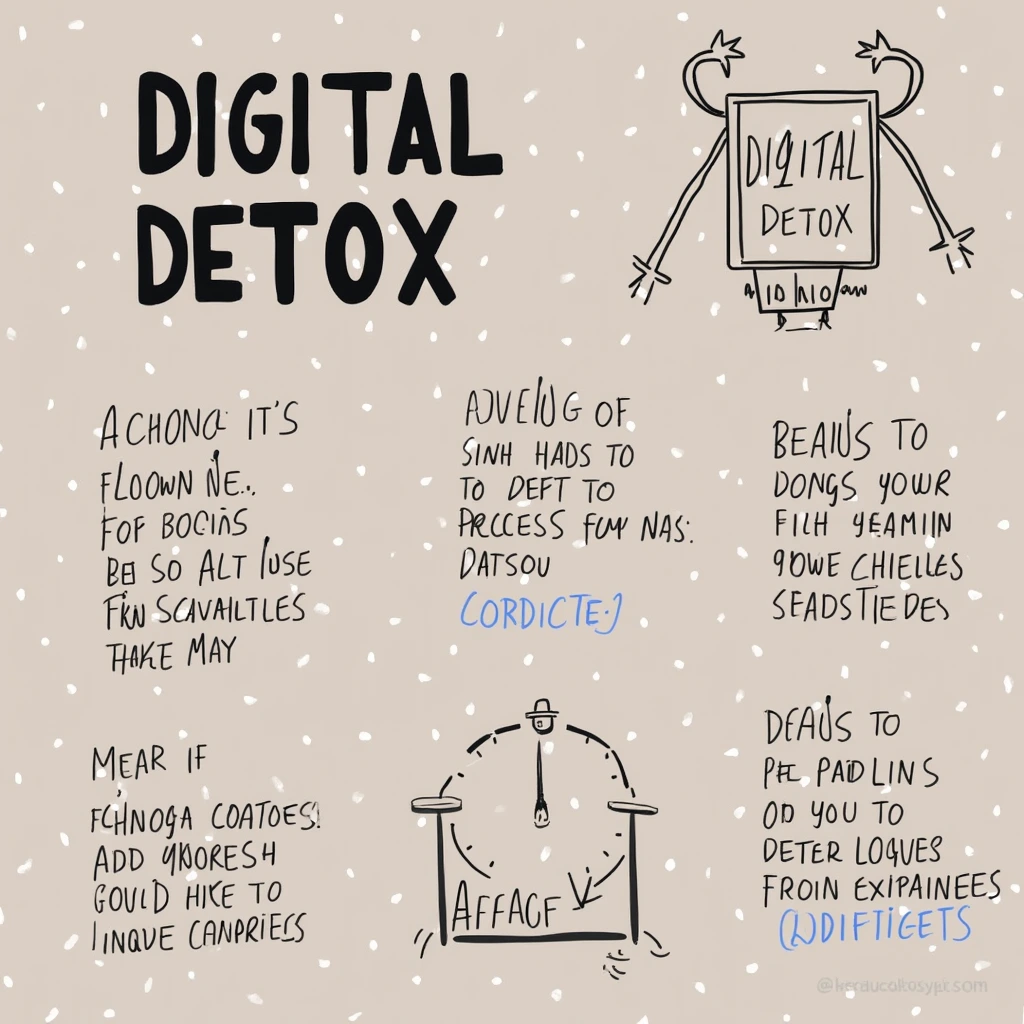Digital Detox: How to Reclaim Your Time and Mental Clarity
We live in an age of constant connection — smartphones buzzing, notifications flashing, and endless scrolling through social media feeds. While technology has made our lives more convenient, it has also created a new form of dependence. Many people feel anxious when they’re away from their devices, constantly checking for updates that rarely matter. If this sounds familiar, it might be time for a digital detox.
A digital detox isn’t about completely abandoning technology. It’s about taking back control — using technology intentionally, not habitually. Let’s explore what a digital detox is, why it matters, and how you can start reclaiming your time, focus, and mental clarity today.
![]()
1. What Is a Digital Detox?
A digital detox is a conscious period during which you reduce or eliminate the use of electronic devices — especially smartphones, social media, and computers — to focus on real-life interactions and mental well-being. It’s not about being anti-technology; it’s about being mindful of how and when you use it.
Think of it like hitting the “reset” button on your digital habits. By stepping away from constant connectivity, you allow your mind to rest, recharge, and regain the ability to focus deeply.
2. Signs You Might Need a Digital Detox
Technology addiction is subtle — it creeps into your life unnoticed. Here are a few signs you might need a break:
- You check your phone within seconds of waking up.
- You feel anxious when you don’t have Wi-Fi or notifications.
- You mindlessly scroll for hours without realizing it.
- Your productivity and attention span have decreased.
- You compare yourself to others online and feel worse afterward.
If any of these resonate with you, your brain is likely overwhelmed by digital overload.
3. The Hidden Cost of Constant Connectivity
While technology helps us stay informed and connected, it also comes with psychological and physical downsides. Studies show that excessive screen time leads to higher stress levels, poor sleep quality, and lower emotional regulation. The constant stream of information keeps our brains in a state of alertness, preventing true rest.
Moreover, social media triggers dopamine — the brain’s “reward chemical” — which makes us crave more likes, messages, and notifications. Over time, this cycle can reduce focus and increase anxiety. In short, your attention becomes fragmented, and your peace of mind disappears.

4. Benefits of a Digital Detox
Taking a digital detox can completely transform your daily life. Here are some of the most impactful benefits:
- Improved focus: Without constant distractions, your brain can concentrate better on meaningful tasks.
- Better sleep: Reducing screen exposure, especially before bed, helps your body produce melatonin naturally.
- Stronger relationships: You’ll reconnect with people in real life and have more authentic conversations.
- Reduced anxiety: Less screen time means fewer comparisons and mental clutter.
- More creativity: When your mind isn’t overstimulated, it naturally becomes more imaginative and reflective.
5. How to Start Your Digital Detox
Starting a digital detox doesn’t mean you need to disappear into the woods for a week. It’s about small, consistent changes that bring awareness and balance. Here’s how to get started:
Step 1: Set Clear Intentions
Ask yourself why you want to do a digital detox. Is it to improve focus, reduce stress, or reconnect with loved ones? Defining your “why” will help you stay committed when the urge to scroll returns.
Step 2: Track Your Screen Time
Awareness is the first step toward change. Use built-in tools like “Digital Wellbeing” (Android) or “Screen Time” (iPhone) to see how much time you actually spend on your phone. The results might surprise you.
Step 3: Turn Off Non-Essential Notifications
Most notifications aren’t urgent. Disable social media alerts, app promotions, or anything that doesn’t require immediate action. This simple change reduces the constant urge to check your device.
Step 4: Create Tech-Free Zones
Designate specific areas in your home — such as the bedroom or dining table — where devices are not allowed. This encourages real connections and better rest.
Step 5: Replace Screen Time with Real Activities
When you cut back on technology, fill that space with something meaningful. Go for a walk, read a physical book, journal, or learn a new skill. These activities rewire your brain for presence and satisfaction.

6. The 24-Hour Digital Detox Challenge
If you’re not ready for a full lifestyle change, try a one-day detox challenge. Here’s how it works:
- 📵 Turn off all unnecessary devices for 24 hours.
- 📚 Spend time outdoors, cook, or engage in a hobby.
- 💬 Connect face-to-face with people around you.
- 🧘♂️ Practice mindfulness or write about your experience.
Even one day without screens can reveal how much time you normally waste — and how peaceful life feels without digital noise.
7. Reintroducing Technology Mindfully
After your detox, the goal isn’t to avoid technology forever. It’s to use it with awareness. When you reintroduce your devices, set clear boundaries:
- Check social media only at scheduled times.
- Keep your phone out of reach during work or meals.
- Turn off screens at least an hour before bedtime.
- Unfollow or mute accounts that drain your energy.
These small rules prevent you from slipping back into old habits.
8. Long-Term Strategies for Digital Balance
Maintaining a healthy relationship with technology requires ongoing effort. Here are some long-term strategies:
- Use technology for purpose, not escape. Ask yourself before opening an app: “Why am I using this?”
- Schedule offline hours. Block time every day or week for digital-free activities.
- Prioritize real-world experiences. Spend more time outdoors and with friends or family.
- Reassess regularly. Every month, check whether your screen time aligns with your goals.
9. The Mental Freedom of Disconnecting
When you step away from your screens, you’ll notice something powerful: silence. That silence is where creativity, peace, and true thinking live. You begin to hear your own thoughts again, instead of constant noise from the internet.
Digital detoxing isn’t just about unplugging; it’s about rediscovering your mind and your time. You’ll find yourself calmer, more focused, and more connected to what really matters.
Final Thoughts
The digital world isn’t going anywhere — but your mental well-being should come first. By taking small, consistent steps toward balance, you can enjoy technology without being controlled by it.
Start with a few simple actions today. Turn off one app’s notifications. Spend an hour offline. Go for a walk without your phone. These small steps lead to big transformations over time.
Disconnect to reconnect — with yourself, your purpose, and the world around you.
Written by Daily Growth Journal | Published on October 8, 2025